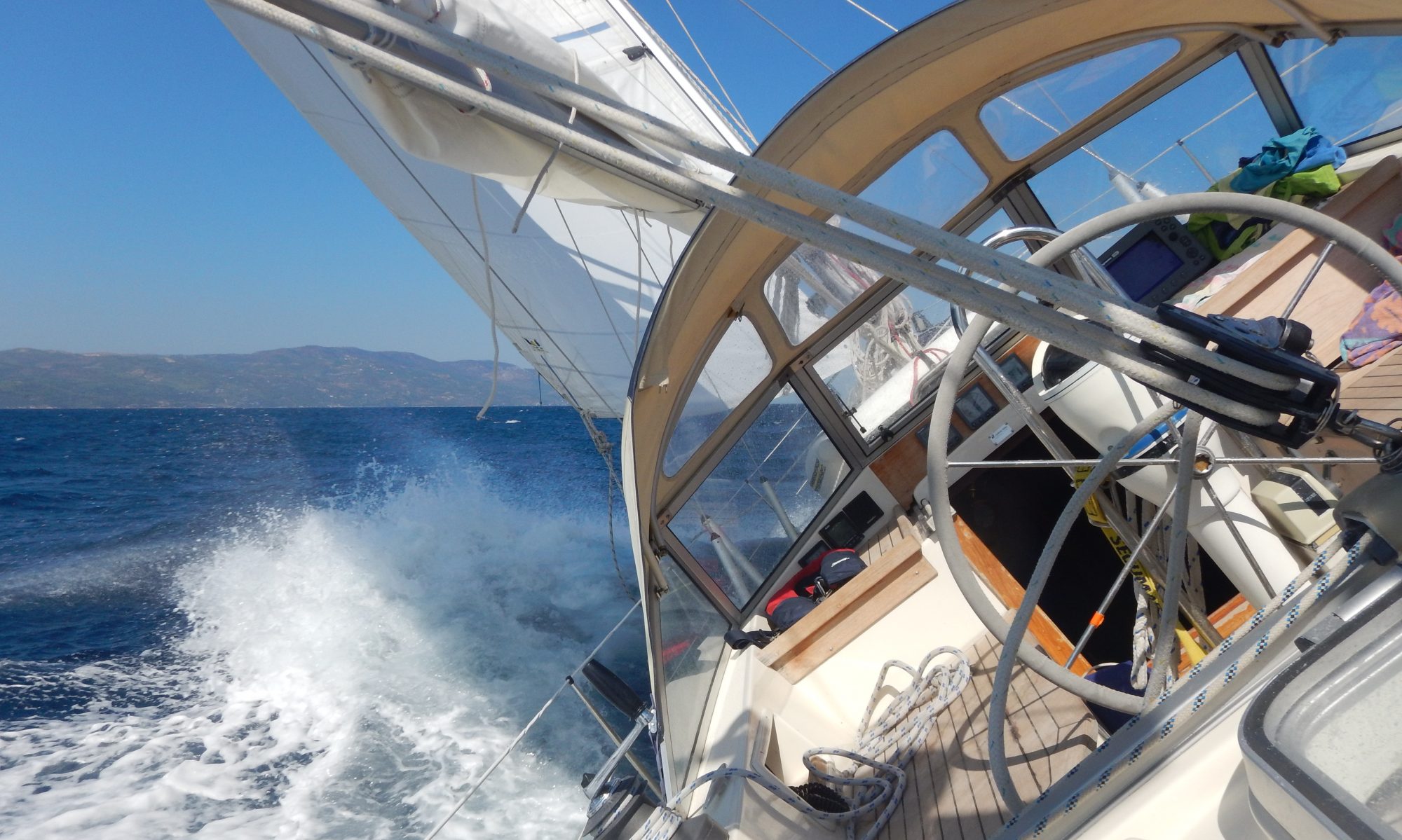More repairs – part 3
The sailing season has begun and Matilda is still on the hard. I had planned to have her back in the water mid of June but things didn’t develop as desired.
Repair jobs are being completed one after the other though and I am confident that she will be back in the water by Friday the 29th.
Together with the rudder which is also back in place some additional issues came up.
One of the portside portholes was about to fall out of the frame. I had seen this porthole leaking when I sailed back from Milos last year and wanted to re-bed the acrylic window. This is not the only one needing rework but the worst one. The problem is that I was not clear on how to do it properly. The 8mm thick acrylic window sits in an aluminum frame and is mounted from the outside. It is only hold by the silicone that sits in the 3 mm wide space between the edges of the window and the aluminum frame. The area where the backside of the acrylic window touches the frame is silicone free. Everyone (including Hallberg Rassy) was saying that there were better sealing compounds available on the market today than silicone but I also read that if silicone was used once, silicone should be used again. To cut a long story short, I decided to go for what has worked well for so many years. I bought a silicon remover (which seems to be unknown in Greece) and an activator for better adhesion to the acrylic material and tried to do my best. I believe that there are more things that can be done wrong here than right and so, I did only one window as an experiment. I used a UV and seawater resistant silicon.
![]() After the old silicone was carefully and thoroughly removed and the sealing area was washed and cleaned with alcohol, the activator was applied and the acrylic window was placed into the frame, aligned and hold in place with some pressure ready to for the silicone to be filled into the grove.
After the old silicone was carefully and thoroughly removed and the sealing area was washed and cleaned with alcohol, the activator was applied and the acrylic window was placed into the frame, aligned and hold in place with some pressure ready to for the silicone to be filled into the grove.
![]() Removing the old silicone from the aluminum frame was the most time consuming operation. It was firs mechanically removed and then the silicone remover was applied. This stuff softens the silicone remains which could then be removed with the help of a square wooden stick. The whole operation is not easy and takes a lot of effort but after half an hour and with the help of a scrub cleaning pad, the aluminum frame was silicone free.
Removing the old silicone from the aluminum frame was the most time consuming operation. It was firs mechanically removed and then the silicone remover was applied. This stuff softens the silicone remains which could then be removed with the help of a square wooden stick. The whole operation is not easy and takes a lot of effort but after half an hour and with the help of a scrub cleaning pad, the aluminum frame was silicone free.
The silicone was applied and it seems that the operation was successful. I can tell this by applying pressure from the inside against the window or by the sound when knocking on it. The question is how long will this last? I hope long. Time will show.
Another problem arose when I was trying to fix the nut that holds the propeller in place. Suddenly it broke into two pieces.

 Judging by the colour, I would guess that this is a clear case of dezincification.
Judging by the colour, I would guess that this is a clear case of dezincification.
Because of the 3/4” imperial thread, finding a new one for replacement was not an easy task, but I finally found something that suited.
